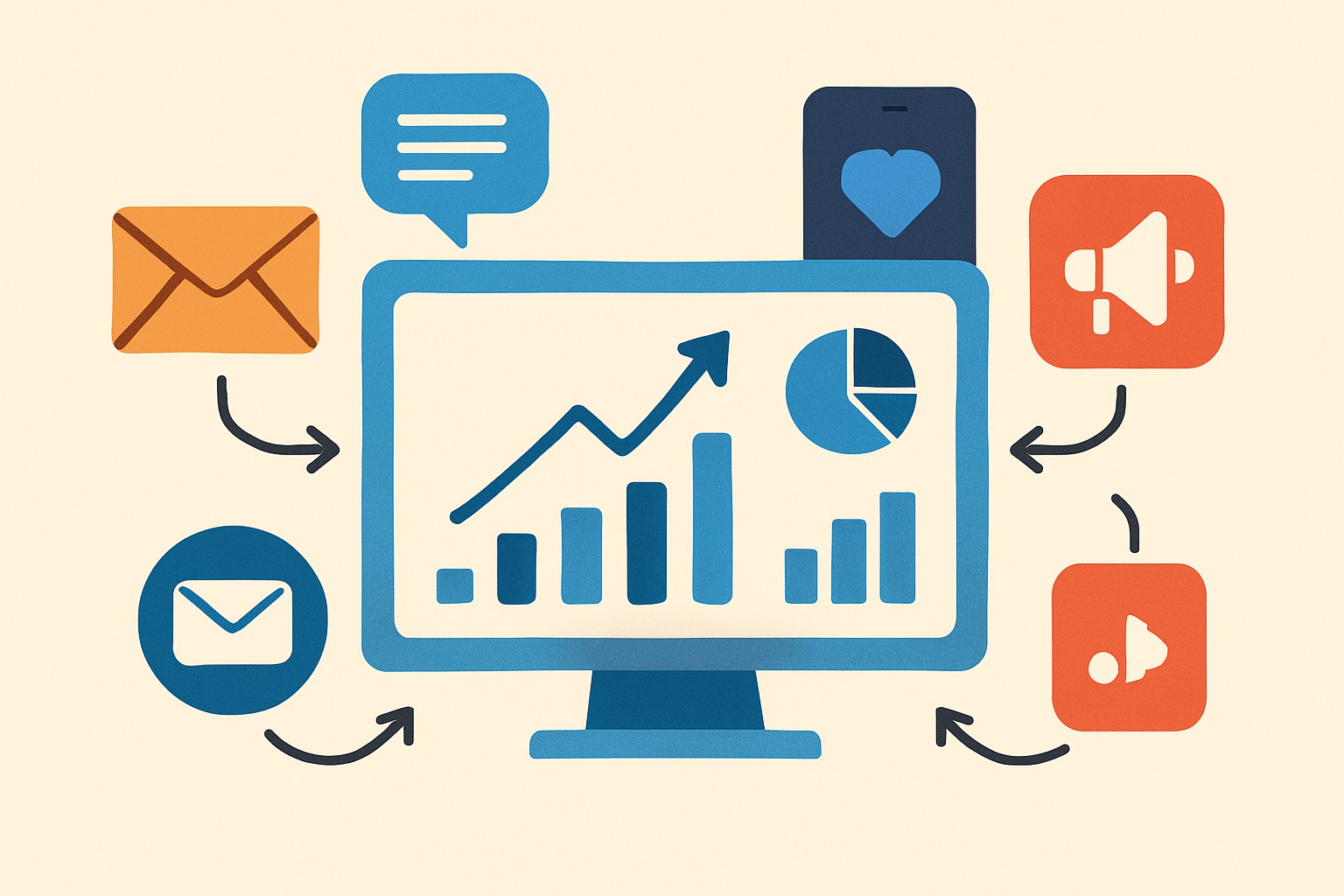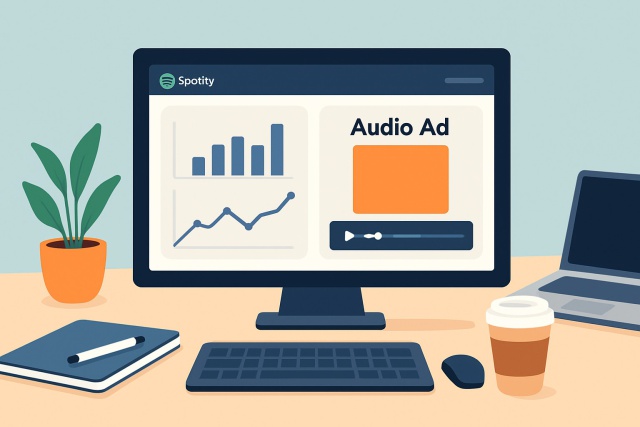Direct response marketing explained with real examples


Direct response marketing is a sharp no-nonsense approach designed to nudge customers toward a clear and immediate action, be it clicking a link or sealing the deal with a purchase.
Understanding Direct Response Marketing and Getting Straight to the Point
Direct response marketing is a clever strategy designed to nudge customers into taking swift measurable actions like making a purchase or signing up for a newsletter or simply asking for more info.
- It features a clear and compelling call-to-action that nudges customers to jump in without hesitation.
- Campaign success can be tracked through responses like clicks, calls or purchases—those nudges that tell you if you’re on the right track.
- Messages are thoughtfully tailored to specific audiences giving them extra relevance and impact.
- Limited-time offers or scarcity tactics add urgency and encourage quick decisions before the chance slips away.
- Communication tends to be straightforward making room for a genuine connection with potential customers.
- Feedback loops let marketers keep their finger on the pulse and tweak campaigns in real time to stay sharp and effective.
Many individuals tend to believe direct response marketing is all about snagging quick sales or running short-lived promotions. However, in reality it can play a key role in building lasting customer relationships and strengthening a brand when combined with consistent nurturing efforts.
How Direct Response Marketing Actually Works (and Why It’s Not Magic)
Direct response marketing usually works by gently steering prospects through a well-defined process. It starts by pinpointing the right audience then rolls out an enticing offer and wraps up with a clear and compelling call to action. Marketers keep a close eye on how people react to these offers and use that feedback to tweak future campaigns.
Start by really getting to know your audience. Dig into their demographics and behaviors so your message does not just land but truly resonates.
Create an offer that really stands out and addresses a genuine problem or adds real value. This encourages people to take action without hesitation.
Use a clear and compelling call-to-action that explains exactly what customers should do next and why it is worth their time.
Choose the best channels to reach your audience, whether that means focusing on digital platforms or relying on trusted traditional methods.
Keep a close eye on customer responses and analyze the data so you can refine your future campaigns for better results.
Channels Commonly Used in Direct Response Marketing
When it comes to direct response marketing, certain channels tend to steal the spotlight. These tried-and-true routes consistently pull their weight, helping marketers connect swiftly and effectively with their audience. Whether you are a seasoned pro or just dipping your toes in, knowing which channels pack a punch can make all the difference.
- Direct mail campaigns drop personalized offers or coupons right into customers' hands—or well, their mailboxes—making it feel a little more personal.
- Email marketing is great for nurturing relationships and getting quick responses by sending carefully targeted content that speaks directly to the reader.
- Social media ads take advantage of detailed audience targeting to spark fast engagement, catching attention just when it counts.
- Pay-per-click (PPC) campaigns put ads in front of motivated searchers who are primed and ready to take action—no beating around the bush here.
- SMS marketing shoots timely alerts or deals straight to mobile devices, landing right in that pocket dopamine spot for instant attention.
- Telemarketing gets down to brass tacks with personal outreach aimed at generating immediate responses—sometimes it’s about the human touch after all.
- Landing pages are designed to reel in leads or sales with crystal-clear messaging and forms so simple, even your grandma could fill them out without breaking a sweat.
Each channel has its own strengths. Email marketing is a bit like your trusty old Swiss Army knife—affordable and easy to customize, but only if you keep your list well-groomed. Direct mail can really pack a punch since it’s something people can actually hold in their hands, though it does have a tendency to make your wallet a little lighter. PPC is the speedster of the bunch—fast results and spot-on targeting, but you’ve got to play your bidding cards right to avoid burning through cash.
Real-World Examples of Direct Response Marketing That Actually Work
To get a grip on direct response marketing, it helps to see it in action.
A tech brand rolled out targeted emails offering a no-strings-attached 14-day trial with a bright hard-to-miss call-to-action button. This sparked a solid 25% signup rate for the trial.
Retailers lean heavily on social media retargeting ads to gently nudge visitors about the products they browsed earlier and often get a 30% bump in same-day online purchases.
One clever restaurant sent direct mail coupons with unique codes that made it easy to track who redeemed them and watch the foot traffic swell.
PPC campaigns zoomed in on lead capture forms and helped a B2B company triple their inquiries within a few weeks.
SMS flash sale alerts packed with urgent discount offers sparked a lively 40% jump in same-day orders for an ecommerce brand that knows how to create buzz.
Each example skillfully blended personalized messaging with a real sense of urgency and no-nonsense calls-to-action, making it a breeze for customers to jump in and act right away.

Illustration showing various direct response marketing channels and their interaction with customers
Crafting Your Own Direct Response Marketing Campaign That Really Connects
Launching a direct response marketing campaign starts with clearly defining your goal and truly understanding your audience. Then you want to create a compelling offer, speak plainly and directly, and pick the channels that resonate best with your crowd.
- Set a clear measurable goal to keep your campaign on track and make evaluating success easy.
- Dig into your audience research and segment wisely so your messages really hit home and feel like they’re speaking directly to someone.
- Whip up an offer that tackles a real problem or brings genuine value to the table without fluff.
- Craft a call-to-action that’s compelling and urgent enough to encourage people to take the next step right away.
- Choose the right channels where your target customers spend their time instead of guessing. Be where the action really is.
- Use tracking tools to keep a close eye on responses and collect data that’s extremely valuable.
- Keep mixing things up by testing different messages, offers and channels because steady small changes often make all the difference over time.
Direct response marketing comes across as a pretty straightforward chat—you ask a clear question and wait for an immediate reply. It’s that kind of intentional back-and-forth that makes measuring results feel almost like second nature.
How to Measure and Improve Your Results (Because Guesswork Isn’t a Strategy)
Key metrics in direct response marketing include conversion rate, which tells you the percentage of individuals who actually follow through on the desired action. Then there’s click-through rate, showing how many people actually take the bait by clicking your ads or links. Cost per acquisition gives you a peek at how much it costs to reel in a single customer, while return on ad spend measures just how much bang you’re getting for your advertising buck.
| Metric Name | Description | Why it matters | How to improve it |
|---|---|---|---|
| Conversion Rate | The percentage of users who actually follow through with the desired action | Gives you a solid sense of how well your offer and call to action are landing with your audience | Make the process as smooth as butter, fine-tune your messaging, and polish up those landing pages |
| Click-Through Rate | The percentage of individuals who click on your ads or links | A handy indicator of how hooked your audience is and how much they’re into what you’re offering | Craft eye-catching ads and zero in on the audience that really matters |
| Cost Per Acquisition | The average amount you shell out to land a paying customer | Lets you gauge how wallet-friendly your campaign truly is | Tighten your targeting, trim unnecessary ad spend, and smooth out the conversion journey |
| Return on Ad Spend | The revenue you rake in for every single dollar spent on ads | Reveals the profitability of your advertising hustle | Double down on your best-performing ads and funnel more resources into the channels that pay off |
Continuous testing plays a vital role in boosting these metrics. When it comes to A/B testing, marketers pit different offers or calls-to-action against each other to see which one really strikes a chord with their audience. Gathering genuine feedback from users then helps fine-tune campaigns.
Frequent Misunderstandings About Direct Response Marketing That Often Trip People Up
Some people tend to think direct response marketing is a bit too pushy or only a game for big brands with deep pockets. But honestly, it can work wonders for businesses of any size or flavor.
- People often think it’s just a quick sales gimmick but when you handle it right it helps keep customers coming back.
- Some individuals complain it’s annoying but well-targeted and relevant messages make the customer journey smoother.
- Small businesses miss out but direct response is within reach and easy on the budget.
- Many assume branding takes a backseat but direct response can work wonders by reinforcing brand identity with consistent messaging.
- It’s often seen as tricky to measure yet tools like Moz and Mangools have made tracking and tweaking much more straightforward than you’d expect.
Further Reading
Unlock Digital Marketing Success with Moz
Struggling to optimize your online presence? Moz is the ultimate Internet Marketing solution, empowering businesses with powerful SEO tools, insightful analytics, and expert guidance. Elevate your digital strategies and outshine the competition.
- Boost organic traffic with data-driven SEO tactics
- Enhance content marketing with expert recommendations
- Gain a competitive edge with comprehensive link analysis








